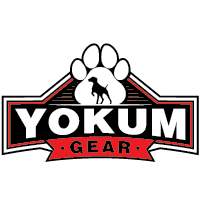Personalized one-on-one dog training can be an immensely rewarding experience for both pet owners and their canine companions. Unlike group classes, individual sessions offer tailored guidance that addresses specific needs, behaviors, and goals. This focused attention can lead to faster progress and stronger foundational skills. To maximize the benefits of one-on-one dog training, here are some comprehensive tips to guide you through the process.
Start with a Comprehensive Assessment
Before diving into training, it's essential to conduct a thorough assessment of your dog’s behavior, temperament, and current skill level. This assessment should cover:
- Behavioral history: Identifying any past traumas, fears, or challenges.
- Temperament: Understanding whether your dog is shy, aggressive, hyperactive, or calm.
- Skill level: Assessing basic obedience skills such as sit, stay, and come.
An in-depth assessment provides a baseline, helping you develop a customized training plan targeting areas where your dog needs the most improvement.
Set Clear and Achievable Goals
Establishing specific objectives is crucial for tracking progress and maintaining motivation. Examples of clear goals might include:
- Achieving consistent recall, even in high-distraction environments
- Eliminating problematic behaviors like excessive barking or chewing
- Mastering advanced obedience commands or tricks
Having defined goals makes it easier to measure your dog's improvement over time and adjusts the training plan as needed.
Use Positive Reinforcement
Positive reinforcement is the cornerstone of effective dog training. It involves rewarding desired behaviors to encourage their repetition. Techniques include:
- Treats: Small, tasty rewards that can be quickly consumed.
- Praise: Verbal affirmations like good boy/girl accompanied by a pat.
- Toys: Interactive play such as fetch or tug-of-war.
By consistently rewarding positive behavior, you strengthen the bond between you and your dog while promoting a happy, motivated learner.
Timing is Everything
Timing is critical when it comes to dog training. Immediate rewards are more effective in helping your dog understand which behaviors are being reinforced. To ensure this:
- Give treats or praise immediately after the desired behavior occurs.
- Keep training sessions short but frequent, ideally 5-10 minutes, 2-3 times per day.
- Use a consistent command and reinforcement pattern to avoid confusion.
Proper timing helps your dog quickly associate actions with rewards, making the training process smoother and more effective.
Consistency is Key
Consistency in commands, rewards, and expectations is vital for successful training. All family members should be on the same page to prevent mixed signals that can confuse your dog. This includes:
- Using the same commands for specific actions (e.g., “sit” should always mean sit).
- Providing rewards only for the desired behaviors.
- Maintaining a consistent training schedule to build routine and predictability.
Ensuring consistency across all interactions helps your dog understand rules and expectations, leading to quicker and more reliable progress.
Address Problem Behaviors with Patience
It’s normal for dogs to test boundaries or revert to old habits occasionally. Addressing problematic behaviors requires patience and persistence:
- Stay Calm: Reacting with anger or frustration can exacerbate issues.
- Redirect: Move your dog’s focus from unwanted behavior to a positive action.
- Seek Professional Help: If persistent issues arise, consulting a professional trainer can provide additional insights and strategies.
Patience and a consistent approach will help your dog overcome challenges, reinforcing positive habits over time.
Incorporate Mental and Physical Stimulation
A well-rounded training program includes both mental and physical activities. Dogs require mental challenges to prevent boredom and physical exercise to maintain health:
- Interactive Toys: Puzzle feeders and interactive toys provide mental stimulation.
- Daily Walks: Regular walks help burn off excess energy and promote good behavior.
- Enrichment Activities: Scent work, agility courses, and playdates contribute to overall well-being.
Balancing these elements keeps your dog engaged, happy, and less likely to develop destructive behaviors as a result of boredom or excess energy.
Monitor Progress and Adjust Accordingly
Regularly monitoring your dog’s progress is crucial for determining the effectiveness of your training plan. Keep track of:
- Milestones achieved: Document new commands learned or problematic behaviors reduced.
- Areas needing improvement: Adjust focus on commands or behaviors that require more work.
- Training logs: Maintain a journal to note sessions, achievements, and adjustments.
Ongoing assessment helps identify what’s working and what needs tweaking, enabling a dynamic approach to training that keeps up with your dog’s development.
Conclusion
Personalized one-on-one dog training offers a unique opportunity to build a strong, understanding relationship with your canine companion. By conducting thorough assessments, setting clear goals, and maintaining consistency, you create an environment conducive to effective learning. Employing positive reinforcement, patience, and regular monitoring further enhances the training experience, ensuring that your dog not only learns but thrives.
Remember, the journey of training your dog is a shared adventure. With dedication and love, both you and your dog can achieve remarkable results, leading to a happier, healthier, and better-behaved pet.

